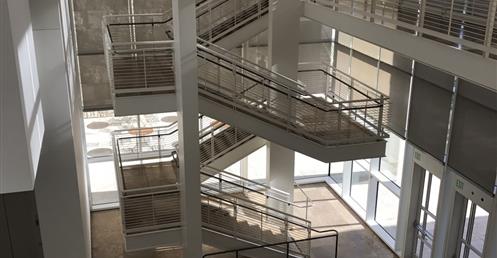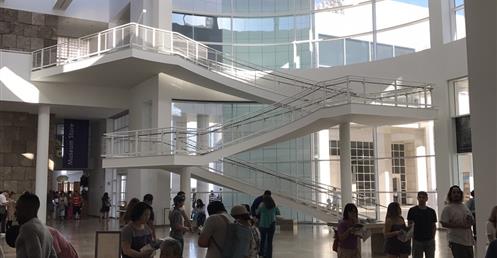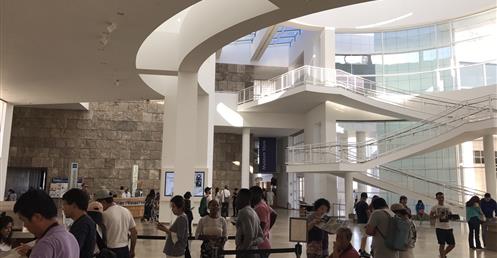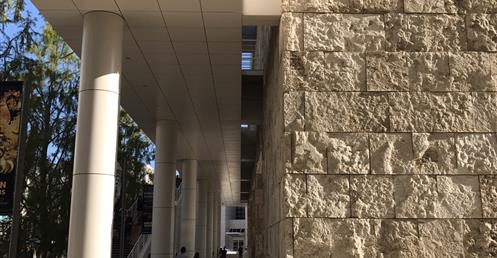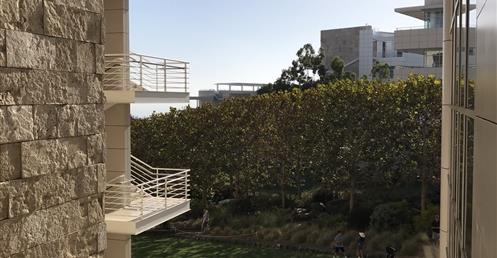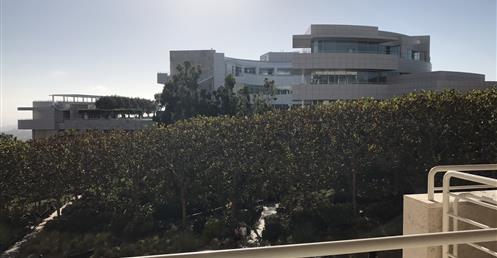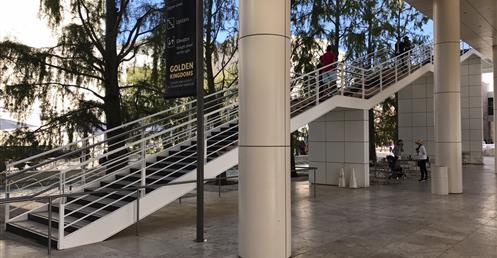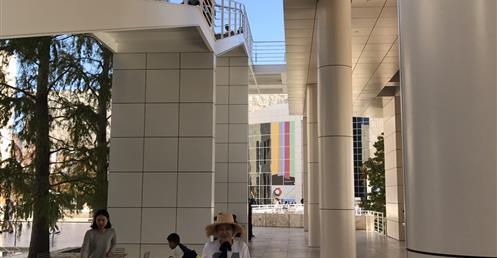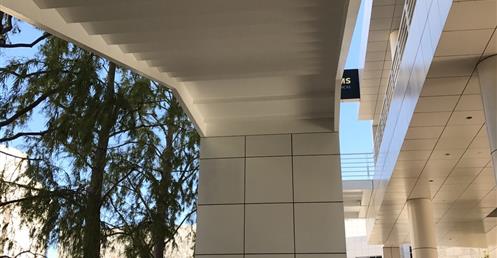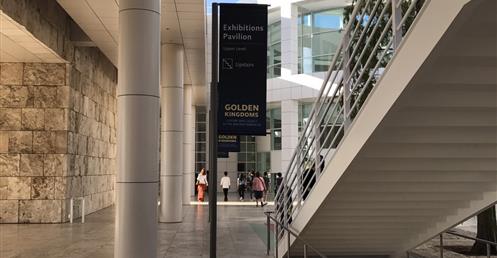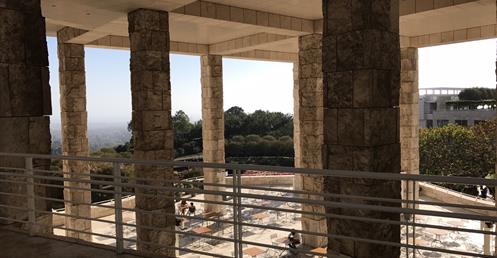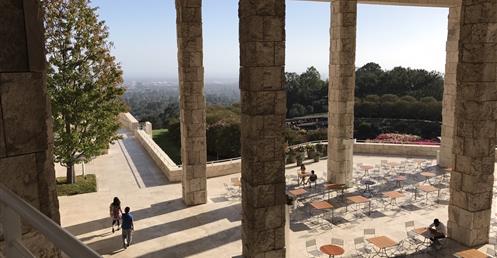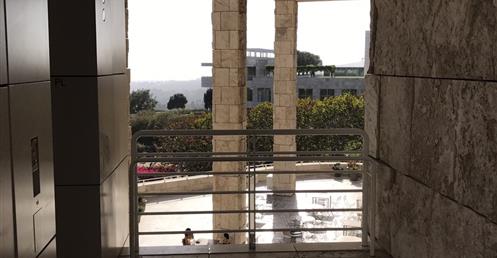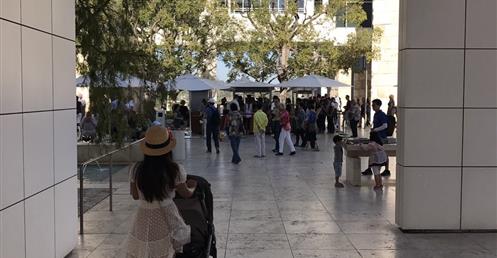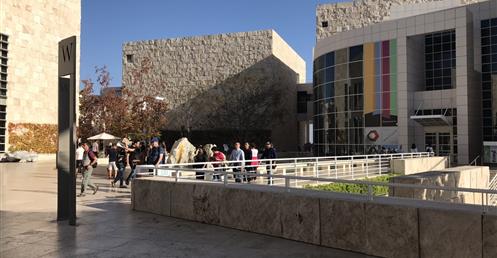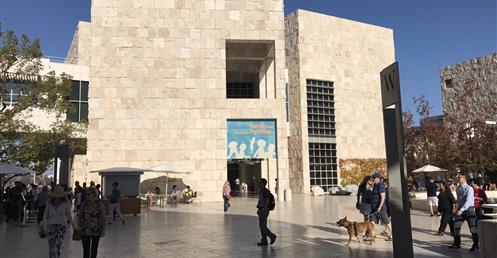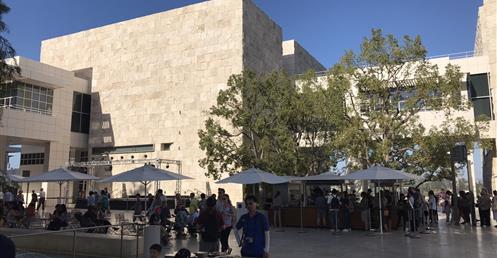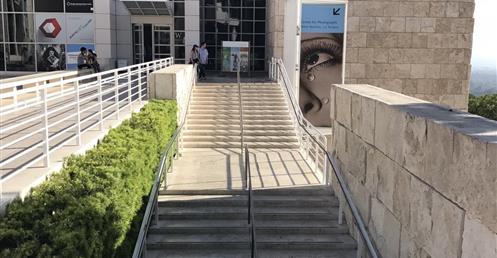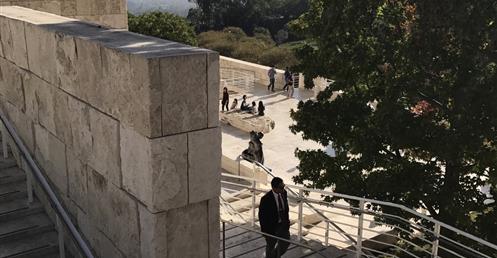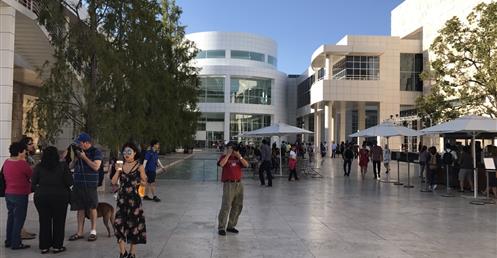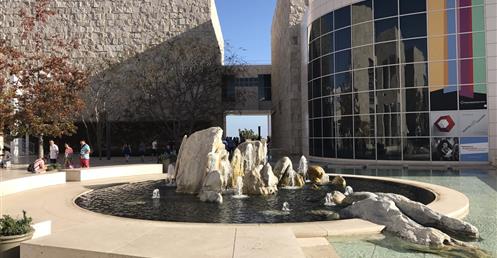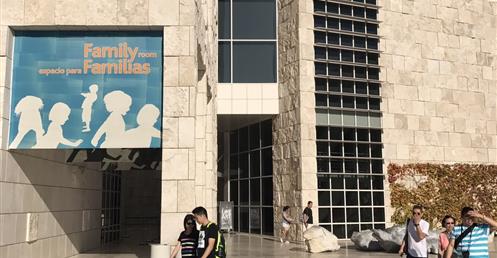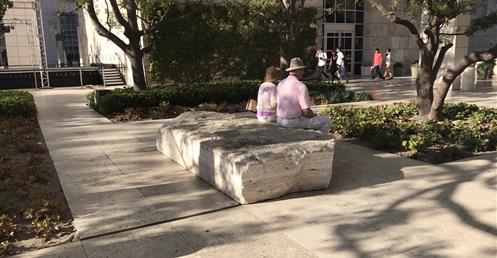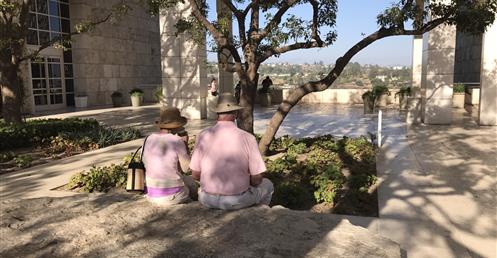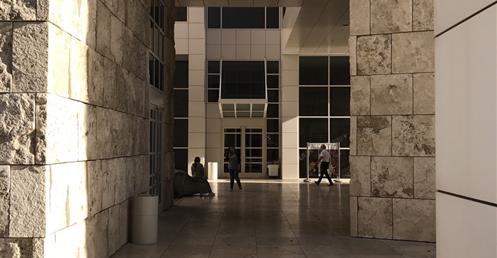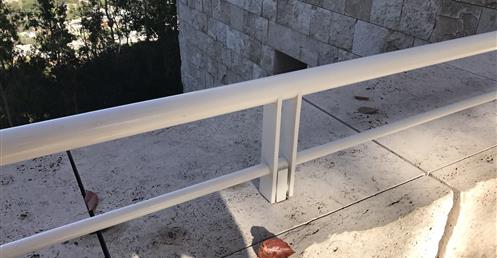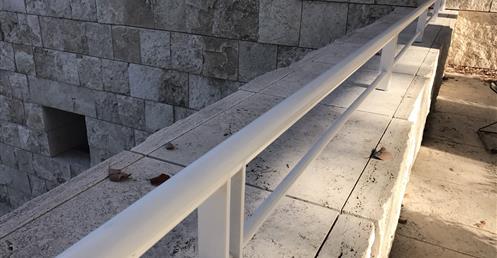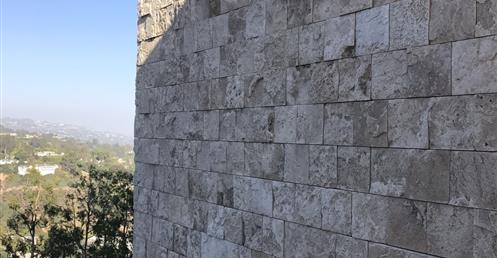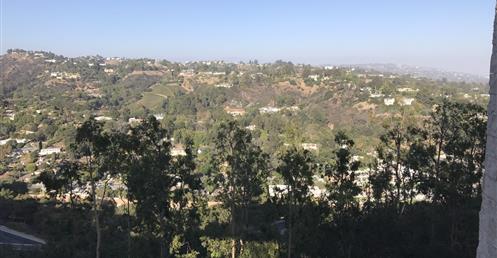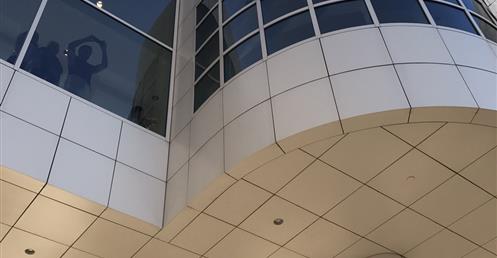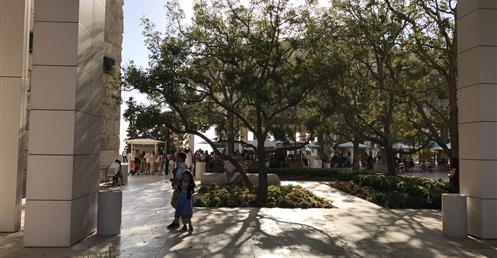The Getty Center 2017 2/4
Los Angeles, California, United States
Photo & travelogue by Architect Johnson Chien
http://www.getty.edu/visit/center/architecture.html
A unique destination, the Getty Center incorporates the modern design of architect Richard Meier, with beautiful gardens, open spaces, and spectacular views of Los Angeles.
Unique design elements, beautiful gardens, and open spaces. Richard Meier's Getty Center harmoniously unites the parts of the J. Paul Getty Trust, and makes them accessible not only to Los Angeles but to the world.
The Site
The Getty Center sits on a hilltop in the Santa Monica Mountains, just off the San Diego Freeway. From there, visitors can take in the disparate aspects of Los Angeles's landscape—the Pacific Ocean, the San Gabriel Mountains, and the vast street—grid of the city. Inspired by the relationship between these elements, architect Richard Meier designed the complex to highlight both nature and culture.
When approached from the south, the modernist complex appears to grow from the 110-acre hillside. Two computer-operated trams elevate visitors from a street-level parking facility to the top of the hill. Clad in Italian travertine, the campus is organized around a central arrival plaza, and offers framed panoramic views of the city. Curvilinear design elements and natural gardens soften the grid created by the travertine squares.
Travertine
The stone—1.2 million square feet of it—is one of the most remarkable elements of the complex. This beige-colored, cleft-cut, textured, fossilized travertine catches the bright Southern California light, reflecting sharply during morning hours, and emitting a honeyed warmth in the afternoon.
Meier chose stone for this project because it is often associated with public architecture and expresses qualities the Getty Center celebrates: permanence, solidity, simplicity, warmth, and craftsmanship.
The 16,000 tons of travertine are from Bagni di Tivoli, Italy, 15 miles east of Rome. Many of the stones revealed fossilized leaves, feathers, and branches when they were split along their natural grain. Meier and his staff worked for a year with the quarries to invent a process using a guillotine to produce the unique finish.
Natural Light
Natural light is one of the Getty Center's most important architectural elements. The many exterior walls of glass allow sunshine to illuminate the interiors. A computer-assisted system of louvers and shades adjusts the light indoors. The paintings galleries on the Museum's upper level are all naturally lit, with special filters to prevent damage to the artworks.
Galleries, Libraries, Offices, and Gardens
In the Museum, clear sight lines between interior and exterior spaces allow visitors to move in and out of the 5 gallery pavilions and always know where they are. Exterior courtyard spaces include fountains and a variety of trees, including Mexican Cypress, as well as the cactus garden to the south.
A circular building to the west of the Central Garden houses the Getty Research Institute (GRI), used primarily by Getty scholars, staff, and visiting researchers. The circular library evokes the introspective nature of scholarly research, with book stacks and reading areas wrapping around a central courtyard. A ramp creates concentric paths, promoting interaction among the scholars and staff. A skylight pulls light through to the subterranean reading room. At the plaza level, an exhibition gallery displays objects in the GRI's collection for visitors.
Two buildings to the north and east of the Tram Arrival Plaza house the Getty Foundation, the Getty Conservation Institute, and the J. Paul Getty Trust administration offices. Sunken gardens, terraces, glass walls, and open floor plans provide fluid movement between indoor and outdoor space, and views of Los Angeles for Getty staff.
蓋蒂中心 2017 2/4
美國加州洛杉磯
旅記 錢志強建築師
Los Angeles, California, United States
Photo & travelogue by Architect Johnson Chien
http://www.getty.edu/visit/center/architecture.html
A unique destination, the Getty Center incorporates the modern design of architect Richard Meier, with beautiful gardens, open spaces, and spectacular views of Los Angeles.
Unique design elements, beautiful gardens, and open spaces. Richard Meier's Getty Center harmoniously unites the parts of the J. Paul Getty Trust, and makes them accessible not only to Los Angeles but to the world.
The Site
The Getty Center sits on a hilltop in the Santa Monica Mountains, just off the San Diego Freeway. From there, visitors can take in the disparate aspects of Los Angeles's landscape—the Pacific Ocean, the San Gabriel Mountains, and the vast street—grid of the city. Inspired by the relationship between these elements, architect Richard Meier designed the complex to highlight both nature and culture.
When approached from the south, the modernist complex appears to grow from the 110-acre hillside. Two computer-operated trams elevate visitors from a street-level parking facility to the top of the hill. Clad in Italian travertine, the campus is organized around a central arrival plaza, and offers framed panoramic views of the city. Curvilinear design elements and natural gardens soften the grid created by the travertine squares.
Travertine
The stone—1.2 million square feet of it—is one of the most remarkable elements of the complex. This beige-colored, cleft-cut, textured, fossilized travertine catches the bright Southern California light, reflecting sharply during morning hours, and emitting a honeyed warmth in the afternoon.
Meier chose stone for this project because it is often associated with public architecture and expresses qualities the Getty Center celebrates: permanence, solidity, simplicity, warmth, and craftsmanship.
The 16,000 tons of travertine are from Bagni di Tivoli, Italy, 15 miles east of Rome. Many of the stones revealed fossilized leaves, feathers, and branches when they were split along their natural grain. Meier and his staff worked for a year with the quarries to invent a process using a guillotine to produce the unique finish.
Natural Light
Natural light is one of the Getty Center's most important architectural elements. The many exterior walls of glass allow sunshine to illuminate the interiors. A computer-assisted system of louvers and shades adjusts the light indoors. The paintings galleries on the Museum's upper level are all naturally lit, with special filters to prevent damage to the artworks.
Galleries, Libraries, Offices, and Gardens
In the Museum, clear sight lines between interior and exterior spaces allow visitors to move in and out of the 5 gallery pavilions and always know where they are. Exterior courtyard spaces include fountains and a variety of trees, including Mexican Cypress, as well as the cactus garden to the south.
A circular building to the west of the Central Garden houses the Getty Research Institute (GRI), used primarily by Getty scholars, staff, and visiting researchers. The circular library evokes the introspective nature of scholarly research, with book stacks and reading areas wrapping around a central courtyard. A ramp creates concentric paths, promoting interaction among the scholars and staff. A skylight pulls light through to the subterranean reading room. At the plaza level, an exhibition gallery displays objects in the GRI's collection for visitors.
Two buildings to the north and east of the Tram Arrival Plaza house the Getty Foundation, the Getty Conservation Institute, and the J. Paul Getty Trust administration offices. Sunken gardens, terraces, glass walls, and open floor plans provide fluid movement between indoor and outdoor space, and views of Los Angeles for Getty staff.
蓋蒂中心 2017 2/4
美國加州洛杉磯
旅記 錢志強建築師
